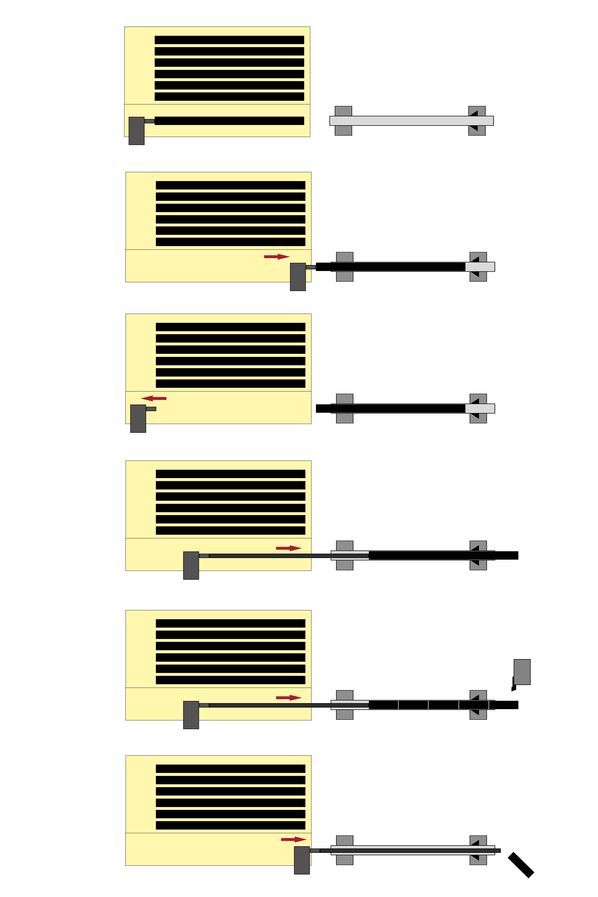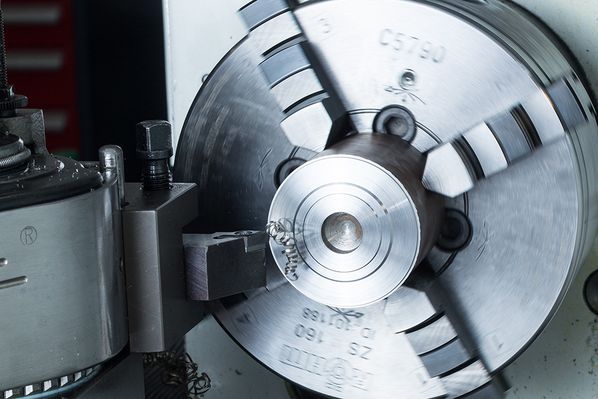

Material bars are made ready for processing on a lateral material storage facility (sloping surface). These are generally bars with round, hexagonal or quadratic outer contours, which may have either hollow or solid cross-sections and which may be made from a wide variety of materials. The bar diameters or key widths are in a range between approx. 6 and 110 mm.
In the case of loading magazines for “short bars”, the length of the bars generally varies between 500 and 1600 mm.
The lateral material storage is of variable length and not only holds the bars ready for processing, but also feeds a specified number of bars, in order to ensure the automated production of the required parts with as long an interval as possible between manual interventions.
From this reserve in the magazine, the individual bars are separated out and deposited in an open guide channel. The material bar is the pushed by a short pusher through the hole in the lathe spindle, where it is fixed in place on the spindle end next to the tool by a clamping device, usually a collet or a chuck.
In order to keep the length of the short loader as compact as possible, it works on the principle of two-stage feed. This means that after the first insertion of the material bar, the short pusher retracts to enable the longer pusher to swivel in. This subsequently undertakes the follow-up feed of the material bar.

Once the bar is delivered, the turning process begins, during which the end of the bar is usually clamped in place for machining. The whole of the bar rotates during the turning process, as is the usual practice. On completion of the turning process, the collet or the chuck is released, enabling the loading magazine to push the material bar forward through the spindle by the required length of the part. After the bar is reclamped in place, the next processing cycle begins. The remnant piece at the end of the processing cycle is pushed by the pusher from behind, through the clamping device into the working space of the lathe.
In order to provide optimum guidance, the gap in the spindle stock of the lathe for passing the bars through must be adjusted to the diameter of the material bar. This is done using appropriately sized spindle liners.





